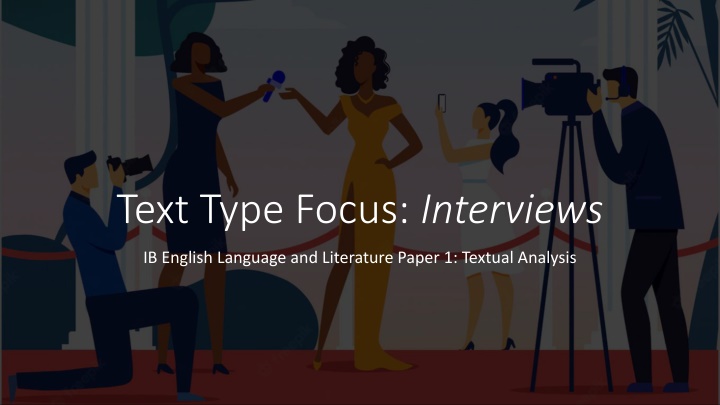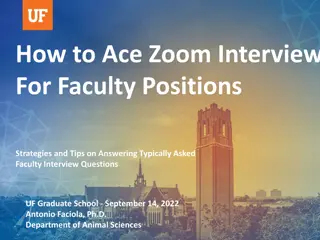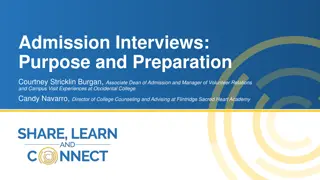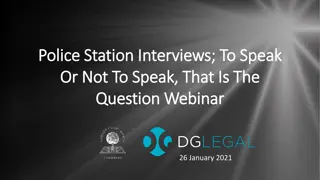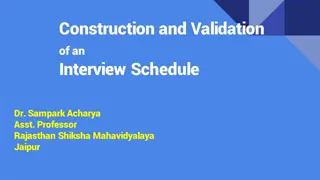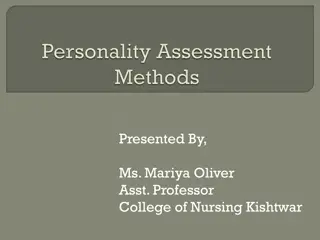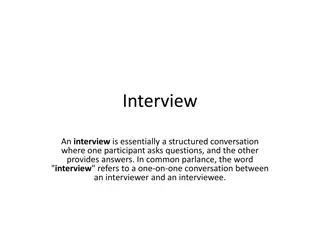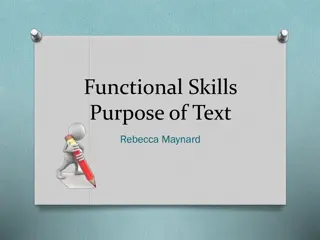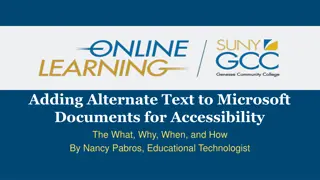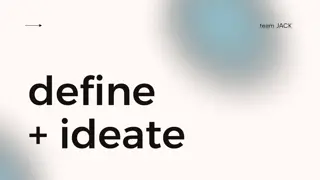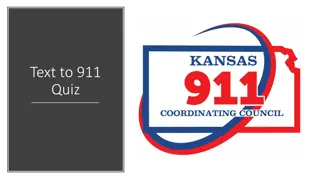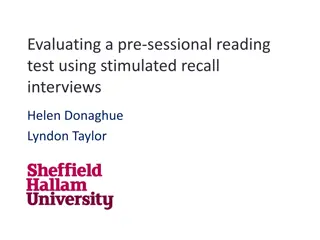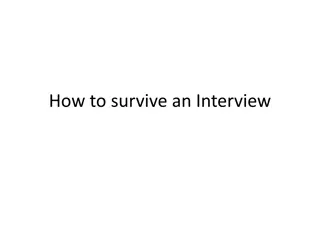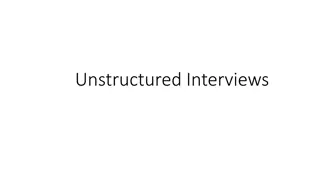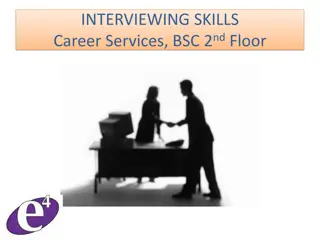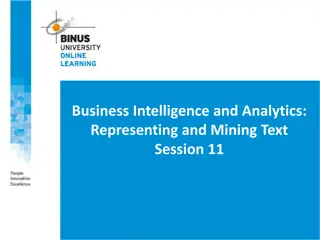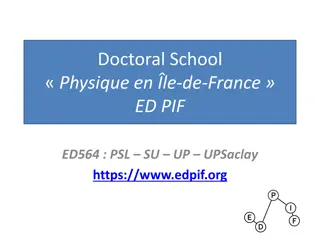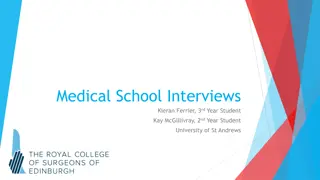Text Type Focus: Interviews
Interviews in English Language and Literature aim to entertain readers, fulfill their curiosity, and provide new insights on various topics. They typically follow a question-answer format and may present a mix of reported and direct speech. Interviews can cover a single topic or multiple subjects, with the interviewer usually guiding the conversation. This text type allows for subjective viewpoints, unique perspectives, and instances of assertion, presenting a diverse range of opinions. The structure often includes introductions that set the context for the interview and may reveal authorial bias or intrusion regarding the subject being discussed.
Download Presentation

Please find below an Image/Link to download the presentation.
The content on the website is provided AS IS for your information and personal use only. It may not be sold, licensed, or shared on other websites without obtaining consent from the author.If you encounter any issues during the download, it is possible that the publisher has removed the file from their server.
You are allowed to download the files provided on this website for personal or commercial use, subject to the condition that they are used lawfully. All files are the property of their respective owners.
The content on the website is provided AS IS for your information and personal use only. It may not be sold, licensed, or shared on other websites without obtaining consent from the author.
E N D
Presentation Transcript
Text Type Focus: Interviews IB English Language and Literature Paper 1: Textual Analysis
Purpose Purpose Often published in magazines or weekend papers, and increasingly online, the purpose of an interview is to entertain the reader. Adjacent to this is the purpose of fulfilling the reader s curiosity for information. Whether about the lives of the rich and famous, an interview about how a writer or musician works, an insight into the day-to-day life of an athlete or film star, the reader should come away from the interview with the feeling that they have seen or heard something new. The reader may be curious to discover a particular viewpoint on a range of topical or cultural issues. What viewpoints about literature, writing and culture can a reader of this interview with Minoli Salgado glean from this extract?
The defining feature of an interview is the Question Question - - Answer Answer format, and the classic, recognizable format is question-answer. The person asking the questions is called the interviewer and the respondent is the interviewee. This type of interview is likely to present reported speech in the form of direct quotation. Alternatively, an interview may be written up as an article with the interviewee s responses embedded inside. This type of article would present a mixture of reported speech and indirect free speech. These examples show you what both interview formats look like on the printed page.
An interview may be focused on one topic, or might range over several different topics. Look out for ways in which the interviewer controls the direction of the conversation. While the balance of text might be skewed towards the interviewee s responses, the topics under discussion might actually be set by the interviewer. Look how this interview, between the winner of a reality television show competition and the host of the show, Topics Topics is controlled and led by the interviewer.
Perspective Presenting the opinions of an individual, this text type is likely to be highly subjective. You can expect to find a range of interesting or unique viewpoints on a variety of topics. You may encounter instances of assertion, whereby the interviewee states opinions as if they are facts. Can you identify any unique viewpoints, and an instance of assertion, in this extract from an interview with Jimi Hendrix conducted in the 1960s?
Structure Structure It is not uncommon for the main body of an interview to be prefaced with an introduction. The author of the text might give some background knowledge about the interviewee, or preface the content of the interview. Look out for authorial intrusion or bias in the language of the writer. What opinions are they implicitly conveying about the subject at hand? Read this introduction (in italics) to an interview with Bernie Ecclestone, the controller of Formula One racing. How does the introduction preface the direction of the interview? Can you detect any examples of bias on the part of the author?
Language Language As a record of speech, you might expect interviews to be semi-formal in register and style. However, while speaking informally, interviewees will still use diction to project a certain image of themselves for the public. Interviews may feature colloquialisms, idioms, and slang that represent the personal identity of the interviewee, as well that of the social, political, geographic, national, and other communities to which they belong. Sometimes, an interview text might even include filler words: um , ah, like and the ellipsis punctuation mark ( ) can all be used to replicate the rhythms and sounds of spoken language. Can you identify any of these features in the Celebrity Big Brother winner interview with Ben?
Image Image As part of this projection of identity, the interview will most likely be accompanied with an image, probably a photograph. You can analyze the photo for certain effects: for example, is the photo naturalistic or is it staged? Is the subject of the photo framed in a certain way? Are they posed? Are they wearing make-up and is their hair styled? What clothes and accessories is the interviewee wearing? What is the background of the photo? What lighting effects can you detect? Briefly analyze these images, from an interview with Beyonce in Vogue Magazine. What identities are being projected in these images?
Celebrity interviews tend to put celebrities on a pedestal, as if there is something special about the interviewee that sets them apart from the rest of us mere mortals. This could be knowledge, skill, ability, achievement, opportunity, success or even just looks or money! The interviewee may inhabit a special world (like a film set or a football club). The purpose of the interview is to allow ordinary readers a glimpse into this world. The opposite trend is for interviewees to suggest they are no different to ordinary readers. They may try to normalize an experience or make a connection with their readers. Does this text, an interview with Harry Potter himself, Daniel Radcliffe, normalize him or create a them-and-us divide? Does the interview provide the Normalization or Them Normalization or Them- -and and- -us ? us ? reader with a glimpse into a special world ? Zoom in on the text and find out.
Your Turn Click on this image to download an interview with Anthony Mangieri, a New A person standing in a bar Description automatically generated with low confidence York restauranteur. Answer the guiding question: How does this text present values and viewpoints in a way that readers might enjoy?
